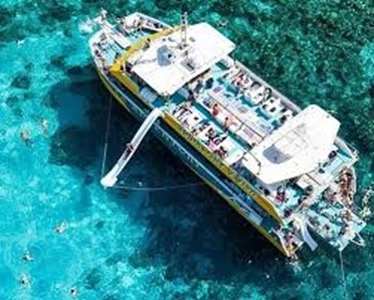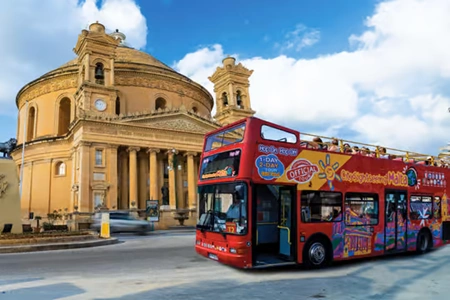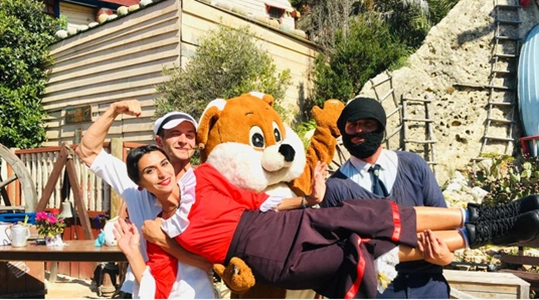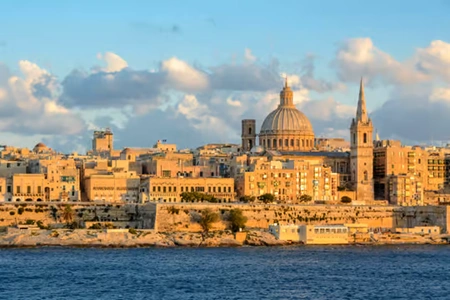Ta ’Qali National Park
This park has several entrances. It is a green park with many alterations. Various areas can be distinguished in the garden, namely:
Large Fountain, Formal Garden, Norrh Walkway, Greek Theater, Qak Tree Circle, Formal Garden Extention, Indian Coral Tree, Tree4U Groove, Boschetto Siracusa and SGS Thompson Groove.
Outside the park you will find a wide variety of trees and ornamental plants, both native and non-native. You can also discover a variety of fauna species here.
In the park you will find peace and you can enjoy nature and the varied design of the park.
HISTORY AND BACKGROUND
In the period 1943 to 1950 this park was part of the Royal Air Force airport with supporting buildings. With the arrival of the Luqa airport facilities, this airport became superfluous.
When the runways were no longer used, car races were organized.
The biographical war film 13 Hours: The Secret Soldiers of Benghazi was largely shot in Malta in 2016 and is about the Benghazi attack of 2012, in which Muslim militants attacked an American diplomatic camp in Libya. A large film set was built for this in Ta 'Qali.
FLORA INSIDE THE PARK
(source: msdec.gov.mt)
Upon entering the park, one sees that the paths under the fencing are covered with Plumbago auriculata, which bloom in white and blue, surrounded by planters of the Maxomys Carissa macrocarpa. The paths lead to the main entrance where a circle of plants with annual flowering plants surround a central fountain. Depending on the season, annual plants include pansies (Viola species), geraniums (Pelargoniums), Limoniums, Antirrhinums, Celosias, Amaranthus, Gomphrenas, Marigolds (Tagetes) and Stocks (Matthiola incana).
The gate leads to the formal garden where a large variety of native and non-native ornamental tree species can be found. Small pieces of Mediterranean forest have also been created by blending native tree species. Pine forests such as the Syracuse Grove and the SGS Grove in the park offer plenty of shade, especially in the summer. A good view of the park and the surrounding areas, with views of Mdina and opposite Naxxar, can be appreciated when climbing the stairs to the top of the main entrance.
Opposite the main entrance is a large area known as the 'flying area', where we find large open plains planted with native Sandarac gum trees Tetraclinis articuluta, Carobs Ceratonia siliqua and olives Olea europea, as part of the 34U campaign.
The formal garden in the park is planted with a wide variety of native and non-native tree species. Conifers in the park are Aleppo Pine (Pinus halepensis), Stone Pine (Pinus pinea), Sandarac gum tree (Tetraclinis articulata), Mediterranean cypress (Cupressus sempervivens), Norfolk Island Pine Araucaria heterophylla (Maltese: Awrikarja) and Smooth Cypress (Cupressus glabra).
Mediterranean trees in the park are Laurel Laurus nobilis (Maltese: Randa), Holm Oak Quercus ilex (Maltese: Ballut), Strawberry tree Arbutus unedo (Maltese: Imbragla), Olive tree Olea europea (Maltese: Siġra taż-Żebbuġa), Chaste Tree Vitex agnus castus (Maltese: Siġra tal-virgi), African Tamarisk africana (Maltese: Bruka), Viburnum tinus, Common Jujube Ziziphus jujube (Maltese: Żinżel), Southern nettle tree Celtis australis (Maltese: Buglar), Judas Tree Cercis siliquastrum : Siġra ta'Guda), European Dwarf Palm Chamaerops humilis (Maltese: Siġra tal-Gummar) and the Spanish Broom Spartium junceum (Maltese: Gennista Safra).
Non-native ornamental trees in the park include: Lagunaria patersonii; Erythrina variegata; Ficus elastica, Schinus molle, Jacaranda mimosifolia,
Tecoma capensis, Justicia spicigera, Dodonea viscose, Firmiana simple, Parkinsonia aculeate, Washingtonia filifera, Washingtonia robusta, Malvaviscus arboreus, Cycas revolute and Ceiba speciosa.
FAUNA
(source: msdec.gov.mt)
The variety of trees that have been planted in the park since the early 1990s attract various birds. Various bird species can be found depending on the season. Native birds found in the park all year round are the Sardinian warbler Sylvia melanocephala (Maltese: Bufula Sewda), Spanish sparrow-passer hispaniolensis (Maltese: Għammiel tal-Bejt), Cisticola juncidis (Maltese: Bufula tal- Imrewha) and the Turkish Turtle Streptolia decaocto (Maltese: Gamiema tal-Kullar).
During the summer, the Spotted flycatcher Muscicapa striata (Maltese: Żanżarell tat-Tikki) breeds in the park, while the Short-toed lark Calandrella brachydactyla (Maltese: Bilbla) breeds in the open fields around the park.
Winter brings different wintering bird species to the park. Robins Erithacus rubecula (Maltese: Pitirross), Stonechats Saxicola rubicola (Maltese: Buċaqq tax-Xitwa), white wagtail Motaċilla alba (Maltese: Zakak Abjad) and Common Starlings Sturnus vulgaris (Maltese: Sturnell) can all be easily observed by foraging insects in open areas within the park. Herons Regulus (Maltese: Bufula tal-Qamar) and fire holes Regulus ignicapilla (Maltese: Bufula tat-toppu aħmar) are both common in coniferous forests in winter, just like the Blackcaps Sylvia atricapilla (Maltese: Kapiner) that are in full occupation in the first months of the year.
During the spring and fall, migration brings a number of bird species that can be observed within the park grounds, including the Hoopoe Upupa epops (Daqquqa tat-toppu) which often searches its food on the ground and Woodchat claws Lanius senator (Maltese: Kaċċamendula ) are fairly clearly perched on lookouts for insects in the spring. Flocks of Night Heron Nicticorax (Maltese: Kwakka) (Fig. 5b) is often seen early in the morning and descends to resting places in the pine forests in the park during the spring and autumn trek.
Native reptile species in the park include both gecko species (Maltese: Wizgħa), the Western whip snake Coluber viridiflavus (Maltese: Serp iswed), Maltese wall lizard Podarcis filfolensis melitensis (Maltese: Gremxula ta 'Malta) and the Mediterranean chameleon Chamaeleo chamaeleon Kamaleonte). These can often be seen as 'sunbathing' in a warm spot on the ground or in the trees, ready to snatch passing insects. The park also has several mammalian species, including the Etruscan feud Suncus etruscus (Maltese: Ġurdien geddumu twil), the Algerian hedgehog Atelerix algirus (Maltese: Qanfud) and the Weasel Mustela nivalis (Maltese: Ballotra).
Butterflies are among the most attractive insects in the park. Red admirals Vanessa atalanta (Maltese: Farfett tal-Ħurrieq) can be observed in the fall and winter, while Painted Ladies Cynthia cardui (Maltese: Farfett tax-Xewk) are abundantly present in the spring, summer and fall. The elegant dovetail Papillo machaon melitensis (Farfett tal-Busbies) is also sometimes seen. Lanatana camara shrubs attract many butterflies, bumblebees and other insects when they are in bloom.
The Lobed Agriope Argiope lobata (Maltese: Brimba tal-Widien), the largest spider on the Maltese islands, is also sometimes seen in the middle of its large web that it hangs between two bushes.
Outside the park you can find BOV Adventure Park, Petting Farm, Craft Park, Malta Aviation museum, Family Picnic area, Crafts Village and the Sunday market. These are described separately in this app.
HISTORY AND BACKGROUND
In the period 1943 and 1950 this park was part of the Royal Air Force airport with supporting buildings. With the arrival of the Luqa airport facilities, this airport became superfluous.
When the runways were no longer used, car races were organized.
The biographical war film 13 Hours: The Secret Soldiers of Benghazi was largely shot in Malta in 2016 and is about the Benghazi attack of 2012, in which Muslim militants attacked an American diplomatic camp in Libya. A large film set was built for this in Ta 'Qali.
Opening hours | 7:00 - 23:00 |
Ticket / admission fee | |
| Everyone | Free |
Address and street / location can be found on our map, click on Guide in the menu bar and you will get a map with markers. | |
Book: Buy tickets for place of interest. sights, hop on hop off buses, exhibitions, safari, etc or book and tour. | |





